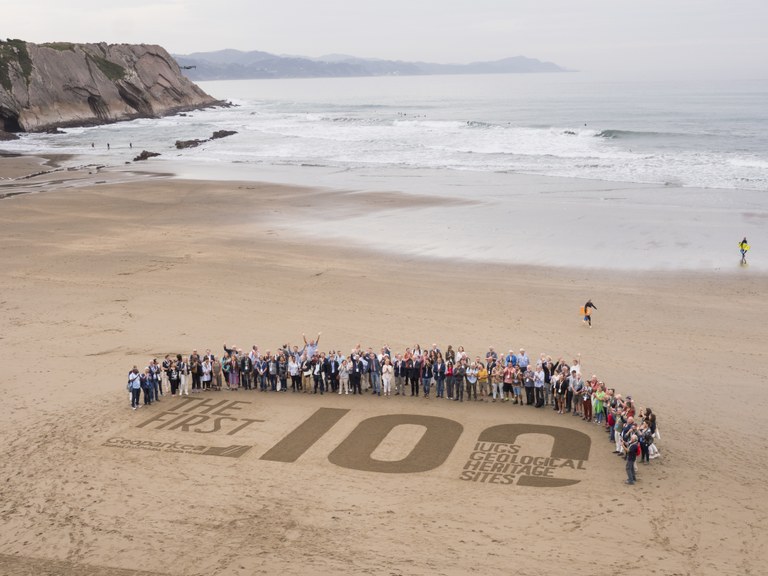“The Flysch is a place of great value and because it is such a valuable heritage, we must look after it and protect it”
Asier Hilario - Scientific Director of the Basque Coast Geopark
The International Union of Geological Sciences (IUGS) presented the first 100 geological heritage sites at a conference held in October in Zumaia. Those one hundred sites include the Flysch between Zumaia and Deba.
- To mark the 60th anniversary of IUGS, a conference was held in Zumaia, where the first 100 IUGS geological heritage sites were presented. The conference brought together 130 scientists and representatives of leading international institutions. How did it go? Was it a success?
Everything went really smoothly. We had been working on this project for a year with the participation of almost 400 experts from all over the world and it finished in Zumaia with the official announcement of the first 100 Geological Heritage sites. We were also able to hold the event at the Basque Coast Geopark. In the world of science and in the field of geoconservation, maximum visibility has been achieved.
- As well as including the Flysch in those 100 sites, the conference was held in Zumaia. That is significant, isn’t it?
From the start we considered holding this important event in Zumaia. The proposal was very well received by everyone and so we got to work. Why Zumaia? Zumaia is one of those 100 sites and was known to the world of science and geology even before the Geopark existed. In addition, from the international perspective, and its location and size, we saw there were plenty of advantages for us and for the Geopark, we felt it was a wonderful opportunity.
- The first 100 IUGS Geological Heritage sites have been designated. But what is a geological heritage site? What does an area need to be designated as such?
Geological heritage, as the very name indicates, is a feature formed by geology, that is, created by Earth processes and of a geological nature which society values. The heritage may be geological, cultural, historic or architectural. Society may value an element for a variety of reasons, it might be because of its scientific interest, or because of its educational interest or its ability to address tourism. In this case, and given that the IUGS grants the recognition, only the scientific interest is taken into account. For that reason, the first thing we did a year ago was to form a working group of 23 people and list the IUGS definition of geological heritage and the selection criteria. According to the definition, these places with geological elements of international relevance must be used as a reference and contribute towards the development of science. They are, in conclusion, essential places for furthering our science.
- The Flysch is on that list, but, do you think the local community and visitors are aware of the importance and significance of the Zumaia coast?
The Flysch has been known about internationally for years, with publications dating from around 100 years ago. Scientifically, it has always been a point of reference. I think that, as the result of our work in recent years, (we starting working to publicise the value of this geological feature almost 20 years ago) more and more local people and visitors are aware of the interest of this place. In the end, the Flysch is a site of great value and because it is such a valuable heritage, we must look after it and protect it. Fortunately, thanks to the work we have done, the message and awareness are spreading.
- What would you say is the best way to see the Flysch. Any suggestions for visitors who come to spend a weekend or their holidays here?
The path between Zumaia and Deba is very pleasant. On this walk visitors will find different, well-built lookout points with information panels offering detailed information. So they will have instructions and resources to understand the “book” of the Earth’s history. And they can do that on their own. The best option, however, are the guided tours we provide from the Geopark, such as the boat trip for example. The Flysch and the coast are spectacular, they grab everyone’s attention, but what we want to show goes further than that, we want to explain the message behind it. We want people to understand the whole story and when those visitors go home, they will think they have seen a very interesting place, rather than just coming away with the idea that it is a very beautiful place. With all that in mind, the Geopark range of tours are the perfect option, just visit the website (www.geoparkea.eus) and book the tour that suits you best.

 turismoa@zumaia.eus
turismoa@zumaia.eus
 Bulegoa
Bulegoa











